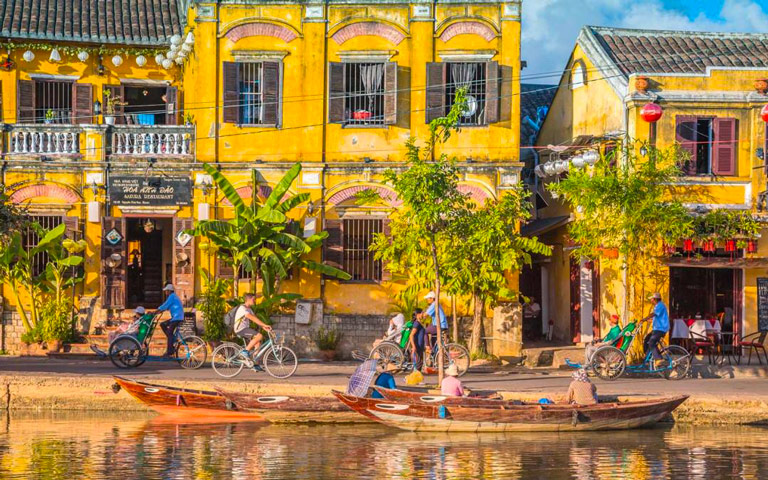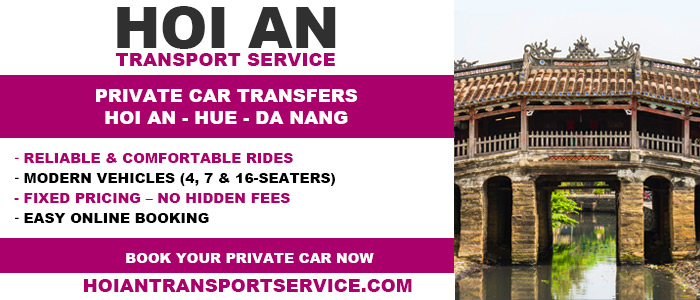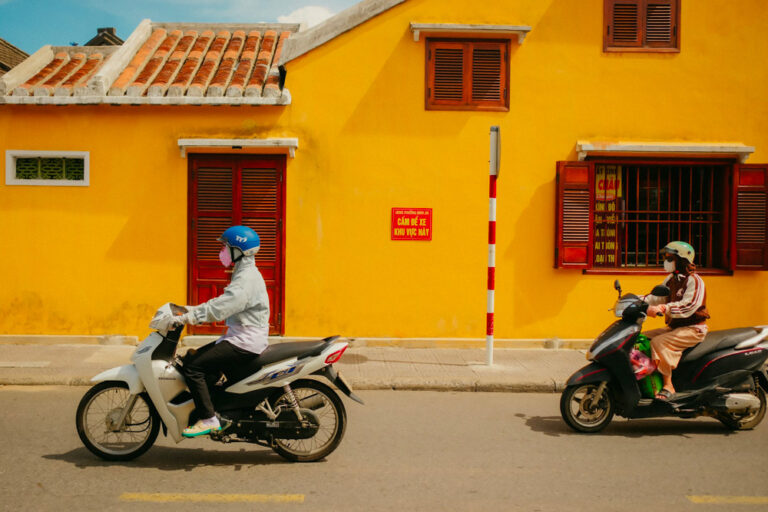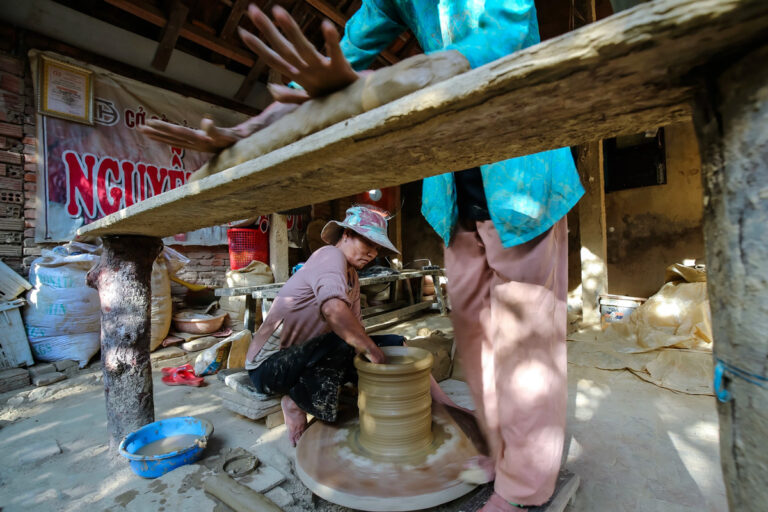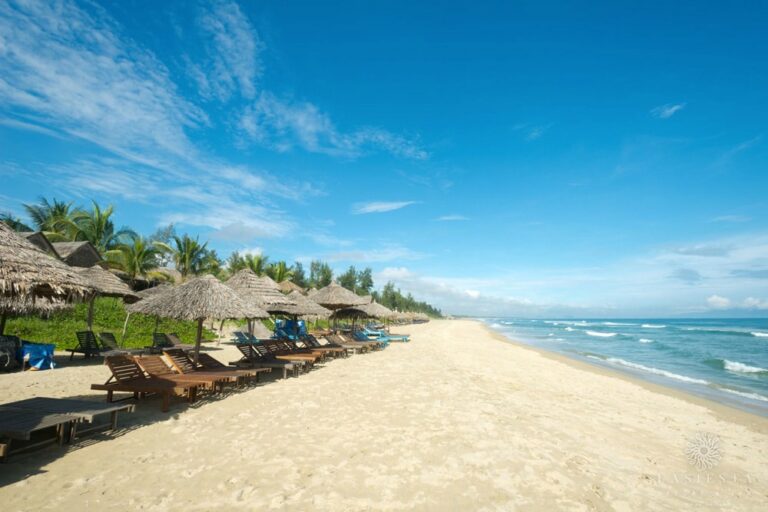What to Do in Hoi An | Top 25 Activities and Attractions | 2025 Guide
Today, I’m giving you a clear and straightforward overview of the best things to do in Hoi An.
For over ten years, I’ve explored every corner of this city. I’ve tested plenty of activities, some of them very local, like the WoodArt workshop, which you won’t find in any mainstream travel guide. No need to dig through the Lonely Planet: what I share here comes straight from the ground.
Whether you’re staying for two days or two weeks, this list has ideas that are truly worth it. These are simple, genuine activities that help you avoid tourist traps and make the most of your time in Hoi An.
So, what exactly should you do in Hoi An? I break it all down for you in the rest of the article.
1. The Old Town of Hoi An
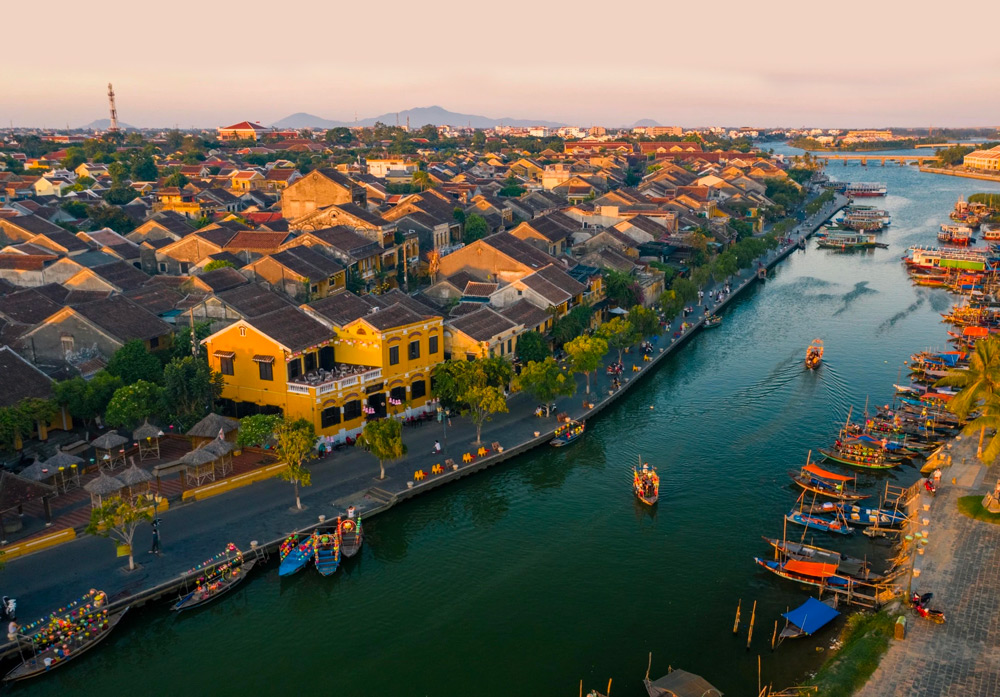

This is clearly the touristic heart of the city, and I can see why.
The historic center, listed as a UNESCO World Heritage Site since December 4, 1999, has remained remarkably well preserved. Hoi An was a thriving trading port as early as the 16th century, attracting merchants from China, Japan, India, and Europe.
But as the river gradually silted up, commercial activity shifted to Da Nang in the early 19th century.
The result? The buildings haven’t changed a bit, and that’s exactly what gives the town its unique charm today.

Hoi An’s old town is home to over 1,100 buildings in total: ancient houses, shops, pagodas, Chinese temples… Everything is tightly packed and perfectly aligned along narrow pedestrian alleys.
More than 800 historic buildings are protected thanks to the town’s UNESCO World Heritage status. As a result, the whole area has kept its original appearance, almost exactly as it was centuries ago.
Add to that thousands of lanterns and Hoi An’s signature yellow walls, and you get one of the most beautiful towns in Vietnam.
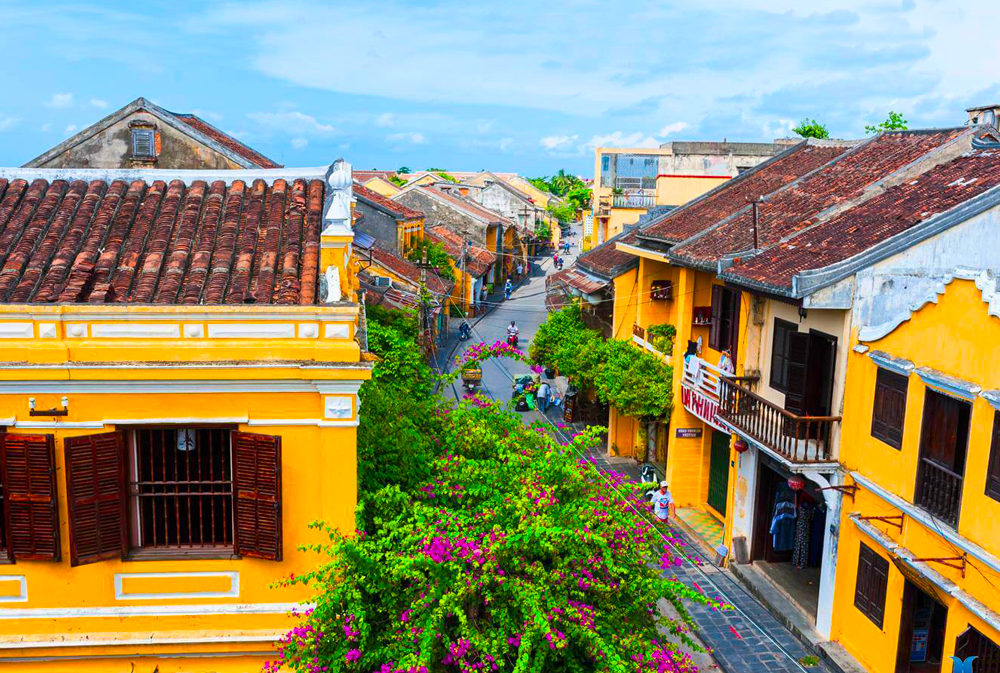
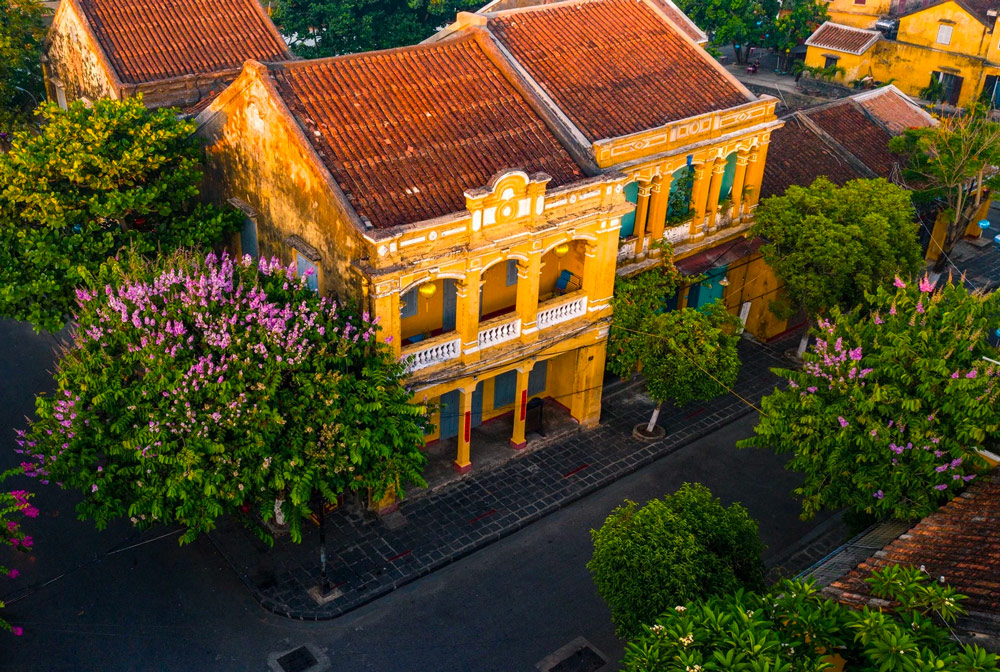
Must-Do Activities in Hoi An’s Old Town
Visiting Hoi An without exploring its old town means missing the heart of it all.
Here’s what I recommend doing on site, no time wasted.
1. Stroll through the old town
This is the first thing you should do. Walk through the narrow alleys lined with ancient buildings, admire the yellow façades, tiled roofs, and the unique atmosphere of this historic center.
2. Visit old houses, temples, and pagodas
Take your time to step inside centuries-old family homes still inhabited today, explore Chinese temples and pagodas. These are rich in history and often very well preserved.
3. Discover Hoi An at night
àWhen the sun sets, the old town lights up. The lanterns strung across the streets create a magical atmosphere, truly one of a kind in Vietnam. Don’t miss it.
4. Take a lantern boat ride
Yes, it’s a bit cliché but it works. Hop into a small boat and glide along the Thu Bon River, floating lantern in hand.
You can book your tickets in advance on GetYourGuide.
Must-See Places in Hoi An’s Old Town
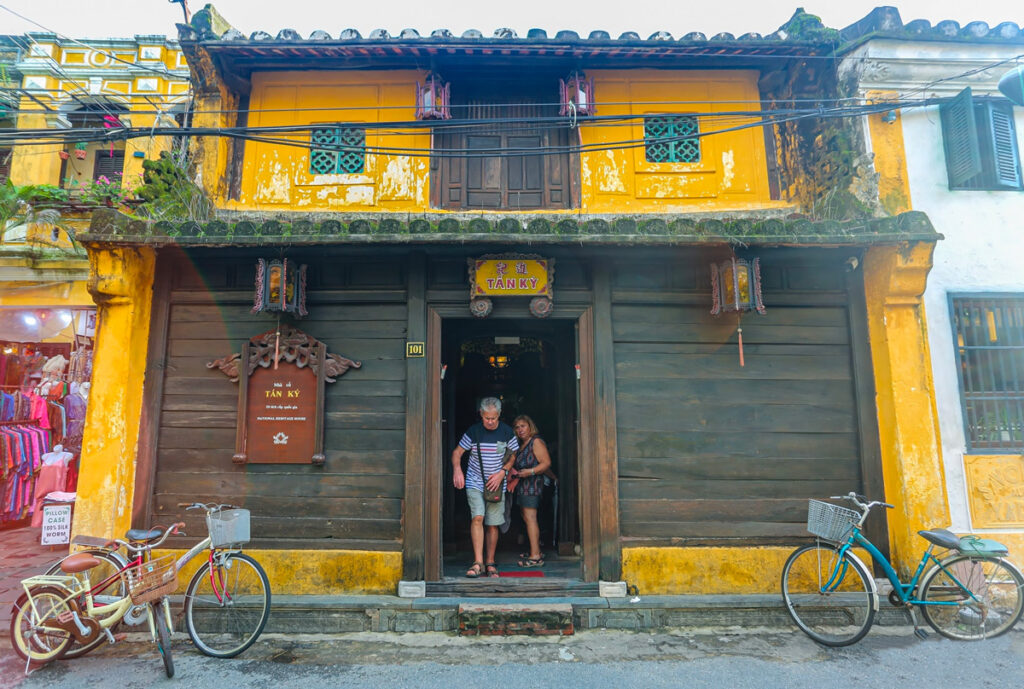
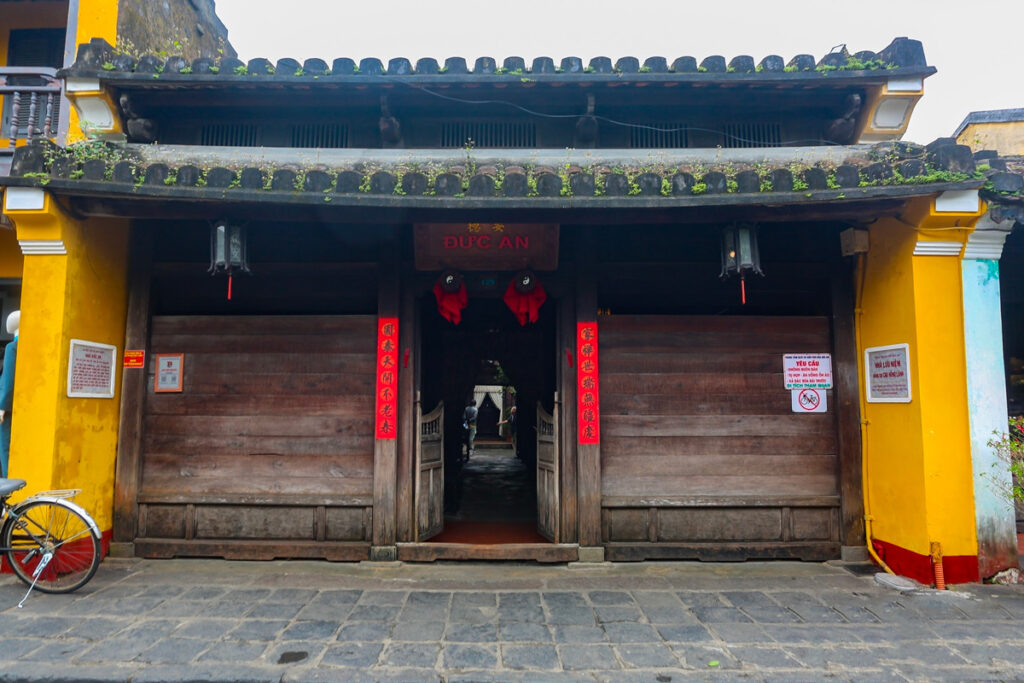
Here are the key landmarks I highly recommend you don’t miss:
- The Japanese Covered Bridge : the iconic symbol of Hoi An
- Tan Ky House : the most famous and oldest heritage home in town
- Phuc Kien Assembly Hall : one of the most beautiful buildings in the city
- Duc An House : full of history and remarkably well preserved
Hoi An Lantern Festival
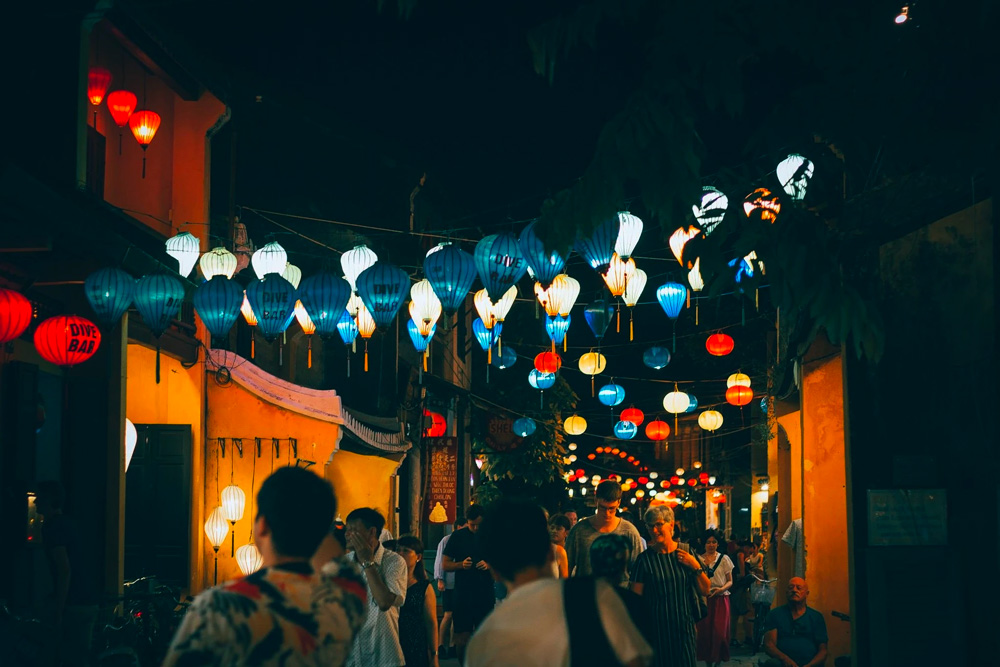
Every month, Hoi An hosts a festival known as the Full Moon Festival, also called the Lantern Festival.
During the event, electric lights are turned off, and the town is illuminated by thousands of lanterns. There are also traditional activities such as folk singing, dancing, and local games.
I’ve written a full article about the Hoi An Lantern Festival if you’d like to learn more.
FAQ – Hoi An Old Town
1. What’s the best time to visit the old town?
Early in the morning, around 5 AM. No tourists, shops are still closed, and you can enjoy the peaceful atmosphere while admiring the architecture.
2. Is Hoi An’s old town free to visit?
Yes, entrance is free. Only the ancient houses, museums, and assembly halls require a ticket. You’ll need a pass with 5 tickets (120,000 VND – around €4.50).
3. Why are all the buildings in Hoi An yellow?
In Vietnamese culture, yellow symbolizes prosperity and stability. It also reflects Hoi An’s historical importance and as a bonus, it’s incredibly photogenic.
2. The Japanese Bridge

It’s simply the symbol of Hoi An. One of the most iconic landmarks in Vietnam. Honestly, if you come to Hoi An and skip this spot, you haven’t really visited the city.
The Japanese Bridge was built in the 16th century by Japanese merchants to connect their quarter with the Chinese one. At the entrance, you’ll see a dog statue on one side and a monkey on the other.
According to legend, these animals represent the year the construction began (Year of the Dog) and the year it ended (Year of the Monkey). Okay, it’s not historically accurate but the story stuck.
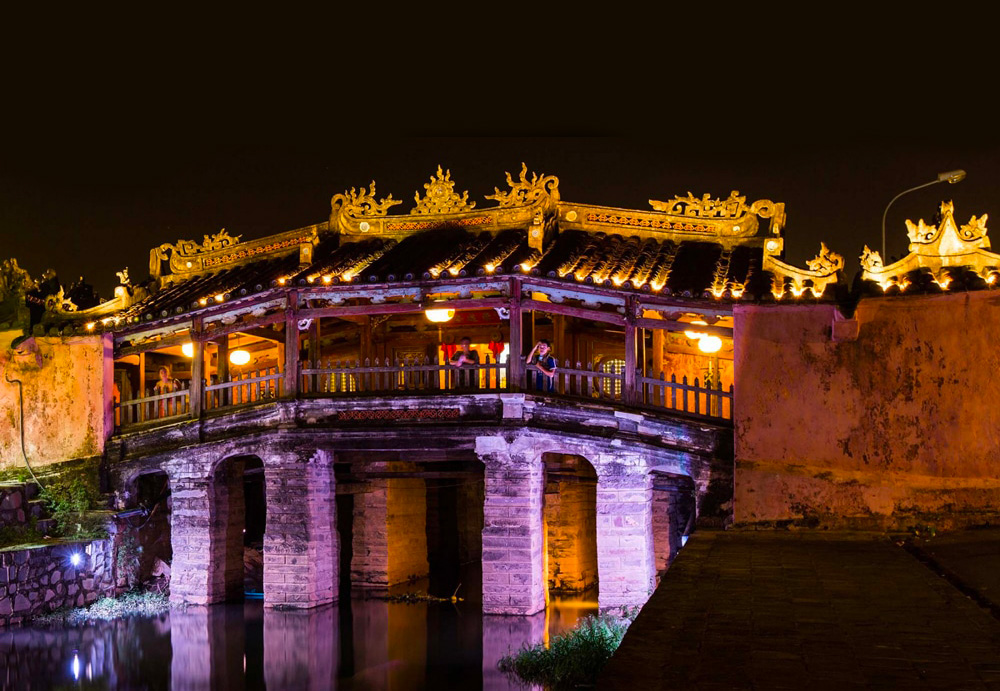

Even if the visit only takes 10 to 15 minutes (just enough to walk through or snap a few photos), the bridge is a must-see in the old town.
To cross it, you’ll need a ticket from the old town pass. It also gives you access to the small temple inside the bridge. You can’t enter freely, so make sure to have your ticket with you.
The Japanese Bridge on a Vietnamese Banknote
The bridge is so iconic in Vietnam that it appears on the 20,000 VND banknote.
If you have one in your pocket, take a closer look, there it is. A little local pride.
3. The Precious Heritage Museum

The first part of the museum showcases Réhahn’s photo gallery, featuring some of his most striking shots of Vietnam and Hoi An.
Some of his work has been published in National Geographic, BBC, Condé Nast Traveler, and The Times. Not bad, right?
The museum is then divided by region: North, Central, and South Vietnam. The goal is to introduce visitors to Vietnam’s 54 ethnic groups, including lesser-known communities like the Co Tu or Brau, often overshadowed by the Hmong or Black Lolos.
Each ethnic group is represented by a large-format portrait and their traditional costume, displayed right next to it. It’s visually powerful and beautifully presented. You’ll also find traditional accessories like earrings, headpieces, pipes, bracelets…
All accompanied by ethnic music playing softly in the background throughout the visit. It’s well done, and unlike any other museum in the area.

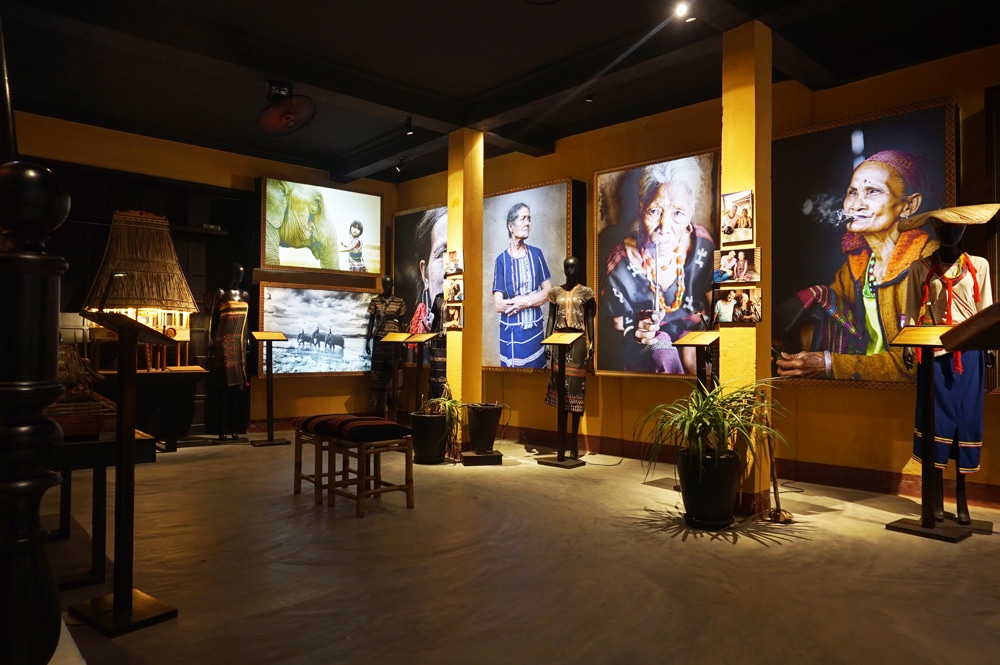
What I especially liked is how personal the museum feels. You can sense that Réhahn is sharing his own journey, and you experience it through his photos and encounters.
It’s not just an exhibition, it’s a visual and human story. I’ve also visited the Vietnam Museum of Ethnology in Hanoi, but this one left a stronger impression.
The costumes aren’t behind glass, so you can see every detail up close and that changes everything. And the music playing in the background? It was recorded by Réhahn himself.
It really adds to the immersion.
Essential Information
- The museum has exhibits in English and French
- Free admission
- Address: 26 Phan Bội Châu Street – Hoi An
- Opening hours: 8 AM – 8 PM non-stop
- Website: https://www.rehahnphotographer.com/precious-heritage-museum/
4. The beaches of An Bang, Ha My, Hidden Beach, and Cua Dai

Looking for sand, peace and a sunbed?
Hoi An is lucky to have five accessible beaches, and in my opinion, two of them really stand out.
1. An Bang Beach
This is the most popular beach in Hoi An, and definitely the favorite among expats. Relaxed vibe, good music, and plenty of great bars and restaurants:
- Soul Kitchen for live music
- Bikini Bottom Express for burgers
- Deckhouse for chilling by the water
If you’re after a lively beach scene, this is the place to be.
2. Cua Dai Beach
In 2023, this beach regained its former beauty. Today, it’s one of the most beautiful beaches in Hoi An. I go there less often than An Bang, fewer restaurants and not much to do, but the vibe is more local and peaceful.
3. Tan Tanh Beach
This used to be my favorite beach, but in 2025, it completely disappeared due to erosion. It was located between Cua Dai and An Bang and was very popular with expats.
Sadly, it no longer exists.
4. Hidden Beach
Also located between Cua Dai and An Bang, Hidden Beach made a real comeback in 2025. Wider sand, restaurants reopening, although some erosion damage is still visible. It’s now one of the best beach spots, along with An Bang.
5. Ha My Beach
Located between An Bang and The Nam Hai resort, Ha My is still a hidden gem. It’s not maintained, true, but if you’re looking for total peace and zero tourists, it deserves a spot on your list.
5. Tra Que Vegetable Village

Just 3 km from Hoi An, on the way to An Bang Beach, Tra Que village (pronounced Cha way) is definitely worth a visit. It’s a peaceful, timeless place.
More than 40 types of vegetables are grown here, many of which are used in Hoi An’s best restaurants. No pesticides, local farmers use river algae as natural fertilizer.
You can learn traditional farming techniques, including how to use the iconic bamboo double watering cans. It’s also a great place to take a cooking class, like the one offered by Mai Home, where ingredients come straight from the garden.
My tip: visit early, between 5 and 6 AM. There are fewer tourists and the village is already alive with activity, perfect for photos.
Around the village, the surrounding rice fields make an ideal setting for a bike ride.
6. The Cham Sanctuary of My Son
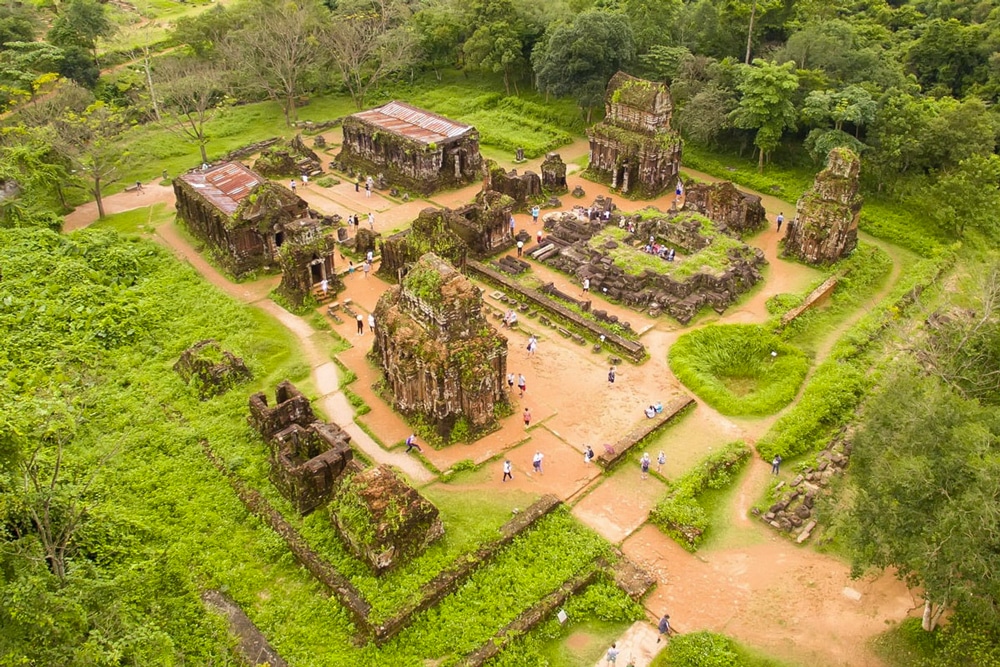
Located about 1 hour from Hoi An, My Son Sanctuary has little in common with Angkor.
If you’ve already visited the Cambodian temples, you might find it a bit underwhelming at first. My Son is much smaller, and part of it was heavily damaged during the Vietnam War.
Several temples were bombed and yes, you can still see the scars. But honestly, despite all that, I think it’s a truly exceptional place.

A UNESCO World Heritage Site, this former Cham sanctuary is key to understanding the region’s history. Some of the temples still standing are absolutely stunning, especially in the early morning light.
If you’re into history, get a guide. It’s the best way to grasp the cultural and religious significance of the site.
Personally, I could spend hours there. Read my full article on My Son Sanctuary here.
Essential Information
- Entrance fee: 150,000 VND per adult
- Opening hours: 6 AM – 5:30 PM
- English audioguides available: 50,000 VND
- Cham dance performances: in the morning and early afternoon (9:30 AM – 10:30 AM and 2:30 PM)
7. Discover the Cuisine of Hoi An
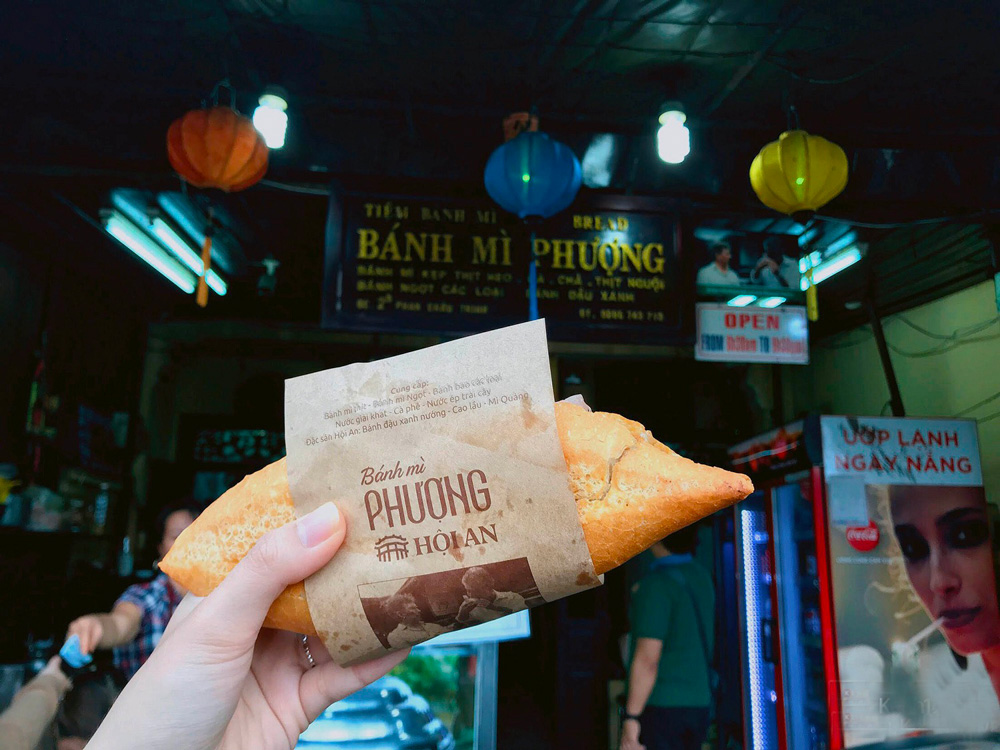
Among all the local specialties, Cao Lau is the most iconic dish.
It’s made with thick noodles, marinated pork, crispy croutons, all cooked with a special water that gives it its unique flavor.
You also can’t miss Banh Mi Phuong, made famous by Anthony Bourdain, who called it the best Banh Mi in Vietnam. Crispy bread, marinated meat, fresh veggies, and a homemade sauce that makes all the difference. And yes, it really is that good.
Other must-tries include Com Ga Hoi An (fragrant chicken rice) and Banh Xeo, a crispy pancake filled with shrimp and pork, served with fresh herbs and nuoc cham dipping sauce.
If you’re into food, Hoi An is a true culinary paradise.
I’ve written a full article with the 12 best street foods to try in Hoi An, if you want to dive deeper.
8. Cam Kim Island

Just 500 meters from Hoi An, Cam Kim Island remains untouched by mass tourism. Few cars, few crowds…
You’re more likely to see water buffalo than tourists.
Accessible via a bridge, it’s the perfect place for a bike ride through rice fields, craft villages, and quiet local life.
What you’ll find there:
- Kim Bong village, known for traditional wood carving
- Mat weavers
- Basket boat and Mi Quang noodle makers
It’s simple, peaceful, and still very local.

My favorite spot after the old town.
If you want to go beyond just wandering on your own, you can book a tour with a local agency like Heaven & Earth, run by Pascal, a French expat. Unlike many agencies in Hoi An offering the same generic routes, their bike tours are unique and truly original.
Book the Heaven & Earth bike tour via GetYourGuide.
9. Cam Thanh Village
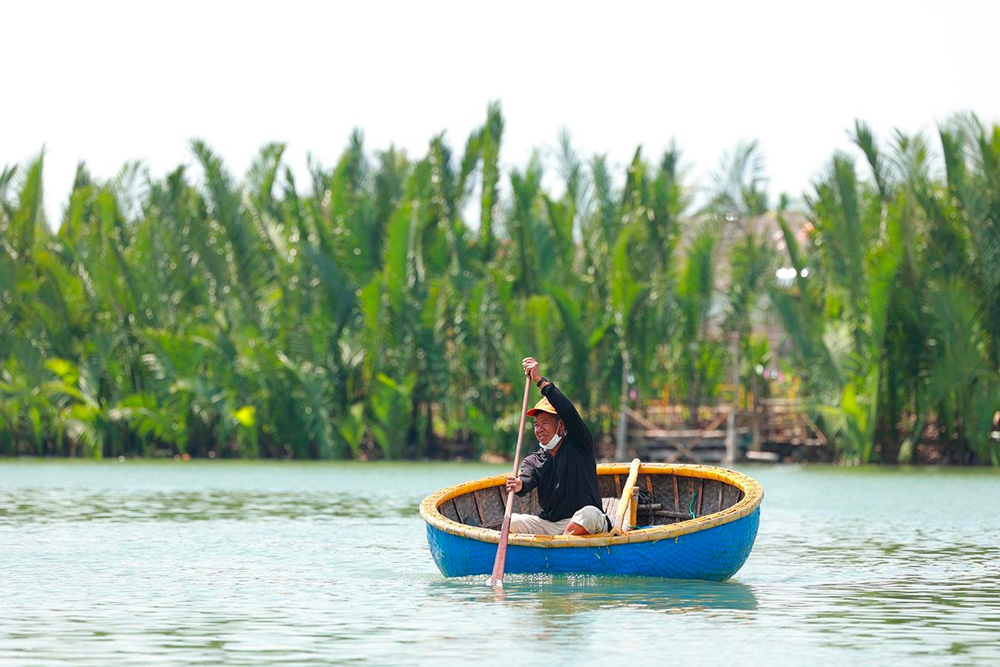
Located 3 km from central Hoi An, Cam Thanh is a great spot for a bike ride away from the city.
It’s grown a bit too much for my taste in recent years, but if you avoid the main roads and take the small alleys, you’ll still find a calm and authentic side of Hoi An.
The village is known for its coconut leaf farming. Here, coconut palms grow directly in the water, forming a 7-hectare mangrove. In the late afternoon (around 4 to 5 PM), you can often see locals harvesting and drying the leaves by the roadside. These leaves are used to make roofs and parasols, like the ones you see on the beach.
This is also where you can try the famous basket boats – small round boats typical of the region. Expect to pay 100,000 to 150,000 VND for a one-hour ride through the water coconuts.
Tested and approved: you can book your basket boat tour with Hangcoconut, a well-rated company with over 640 positive reviews on GetYourGuide. I tried it recently – everything was well organized, authentic, and tourist-trap free. Basket Boat Tour in Cam Thanh – Book your spot here
I’ve also written a full article on where to try basket boats in Hoi An, if you want to explore more.
10. Prao Village

Located about 2.5 hours from Hoi An, Prao village offers a chance to discover the ethnic cultures of Central Vietnam, especially the Co Tu people. The village remains very authentic. You can still see traditional houses and locals wearing Co Tu clothing.
It’s not touristy at all, and that’s exactly what makes it so special. If you’re looking for a local, off-the-beaten-path experience, I really recommend visiting.
Just a tip: avoid Nam Hang village, which is much more commercial and clearly built for tourists.
11. Hoi An Central Market
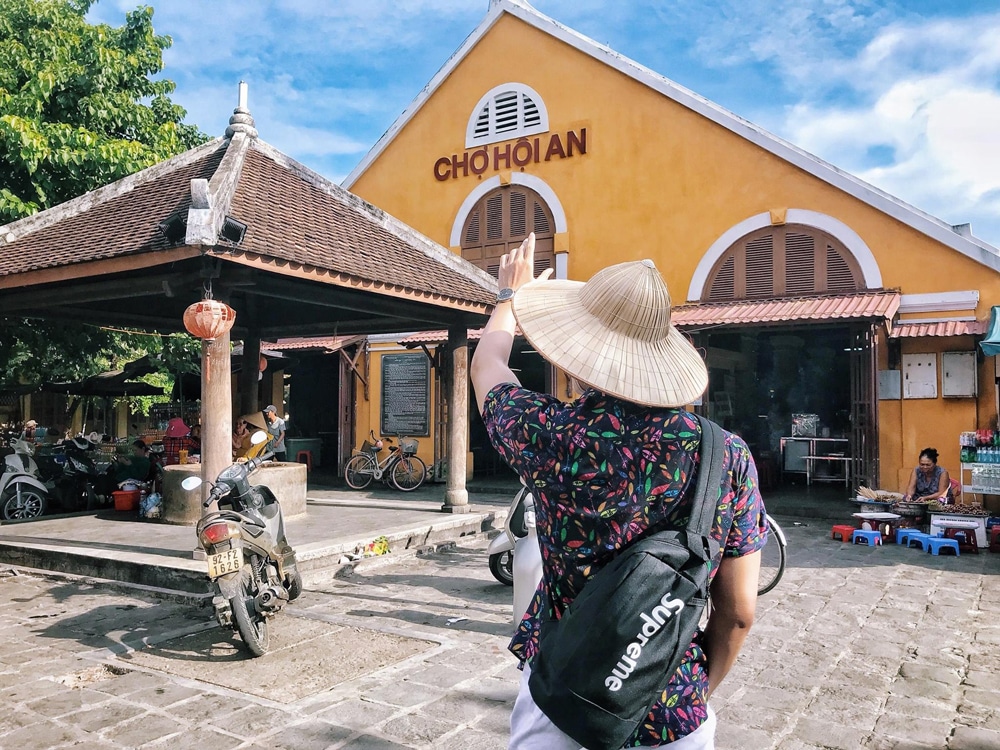
Like everywhere in Vietnam, visiting the central market in Hoi An is one of the best ways to experience local culture.
The market is divided into two main areas: a food court and a butcher section. It’s definitely the food section you’ll be most interested in. You can try local specialties, including Cao Lau, Hoi An’s signature dish, for just 30,000 to 50,000 VND. A great deal for tasty, affordable food.
Even though the market has become more touristy, it still feels genuinely local. Locals come here early in the morning for breakfast, or later in the afternoon for shopping.
Tip: Avoid the central aisle, which is too tourist-oriented, and stick to the quieter side lanes. They’re more authentic and often more interesting.
12. Thanh Ha Pottery Village

Just a few kilometers from Hoi An, Thanh Ha village is entirely dedicated to pottery.
You can see the entire process from start to finish, and best of all, try it yourself. With your entrance ticket, you’ll get to shape your own piece of pottery on a traditional wheel. You also get to take home a small ceramic item, chosen from a selection.
The village has become quite touristy, but honestly, it’s still worth visiting. Wander through the alleys, step inside the workshops, and watch the artisans work, it’s precise, fast, and fascinating.
You can also visit the Terracotta Park, which features a gallery on the village’s most famous potters, and the Miniature Garden, where you’ll see famous landmarks made of clay, including a ceramic version of the Eiffel Tower.
I’ve written a full guide to Thanh Ha Pottery Village if you want to know more.
Essential Information
- Entrance fee: 35,000 VND per person
- Entrance fee for Terracotta Park: 40,000 VND per person
- Combo price for village + Terracotta Park: 70,000 VND per person
- Opening hours:: 8 AM – 5:30 PM
13. Cham Islands
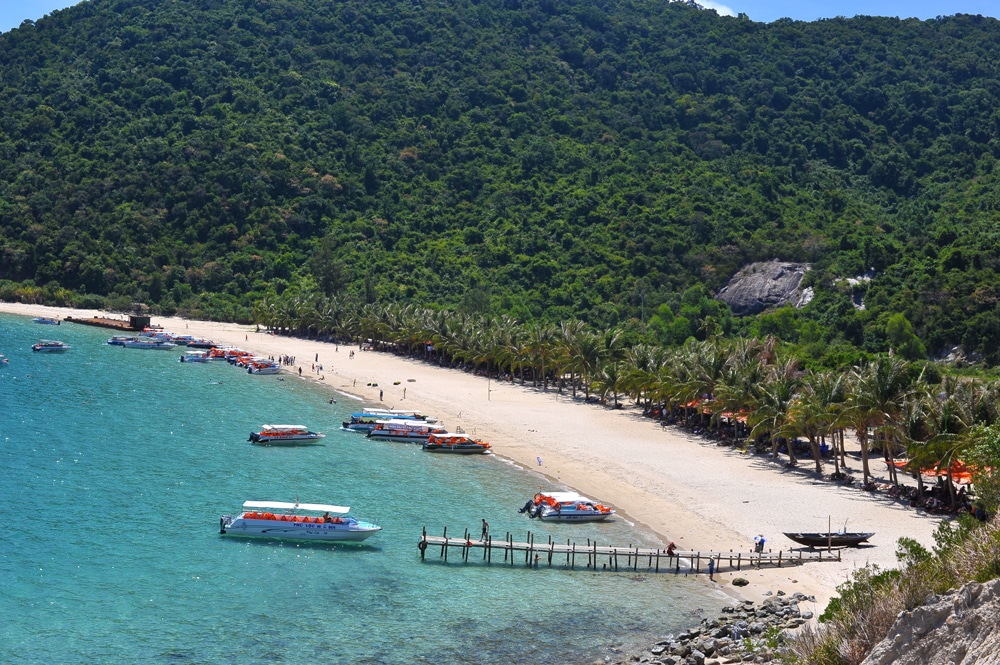
There are two main activities on the Cham Islands:
- Diving and snorkeling
- Trekking
But to be honest, visiting the main island can be disappointing. A military base divides the island in two, which makes getting around quite limited.
On top of that, the roads are in poor condition, and while riding a scooter is officially forbidden, you’ll still find places that rent them out. My advice: take a boat to the surrounding smaller islands. They’re quieter, and you can visit authentic fishing villages, far from the crowds.
Scuba Diving Agencies in Hoi An
Three dive schools offer diving in the Cham Islands:
1. Cham Diving
2. Tiger Fish Divers
3. Blue Coral
They also offer several activities on-site such as beach barbecues and camping.
14. Tam Thanh Mural Village
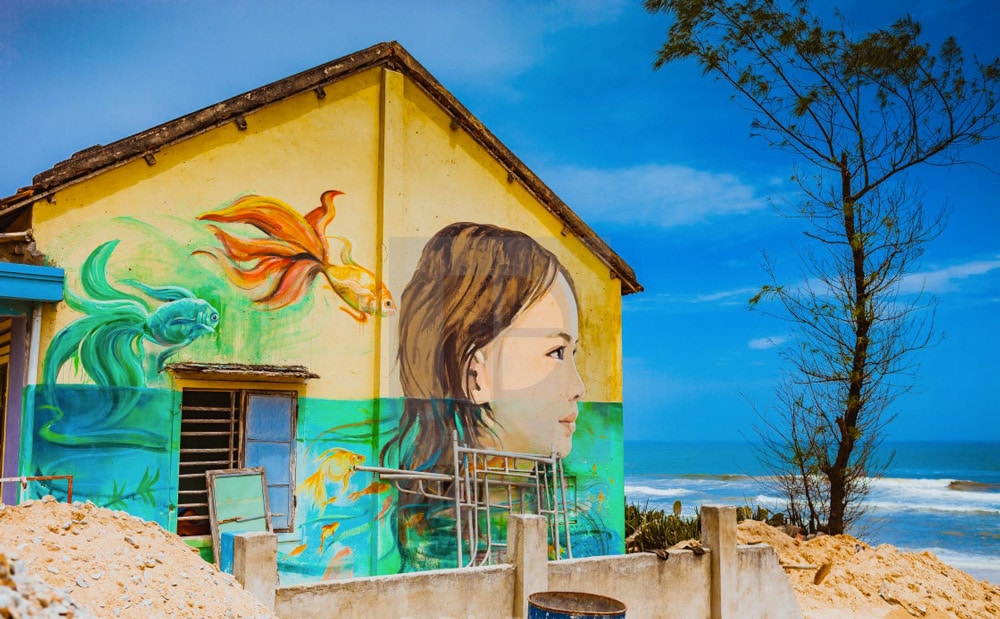
Just a few kilometers from Hoi An, a small coastal village has been transformed into an open-air museum.
Thanks to an art project between Korea and Vietnam, local houses were covered in colorful murals inspired by everyday village life.
The result? A peaceful village turned into a living gallery, where the characters in the paintings are often real residents you might actually meet.
It’s a great idea for a half-day trip outside Hoi An, especially if you want to see something a bit different. And since the village is right by the sea, you can also enjoy a quiet, sandy beach just next door.
Peaceful, photogenic – definitely worth a visit.
15. Duy Hai Fishing Village

Just 10 minutes from Hoi An’s center, Duy Hai fishing village offers a glimpse into a truly authentic Vietnam.
No souvenir shops, no tourists with guidebooks in hand. Just a raw, bustling fish market, incredible street scenes, and a breathtaking early morning atmosphere.
I still remember when the only way to get there was by boat… That’s changed now, but the soul of the village remains untouched. No one stares, no one asks you for money to take a photo. If you’re into street photography or local life, this is a perfect playground.
Take time to sit down at one of the small cafés along the docks, this is where the village truly lives: animated conversations, fishing nets, and boats coming in loaded with the day’s catch.
And for the curious: there’s even a Nuoc Mam (fish sauce) factory.
16. Hoi An Memories
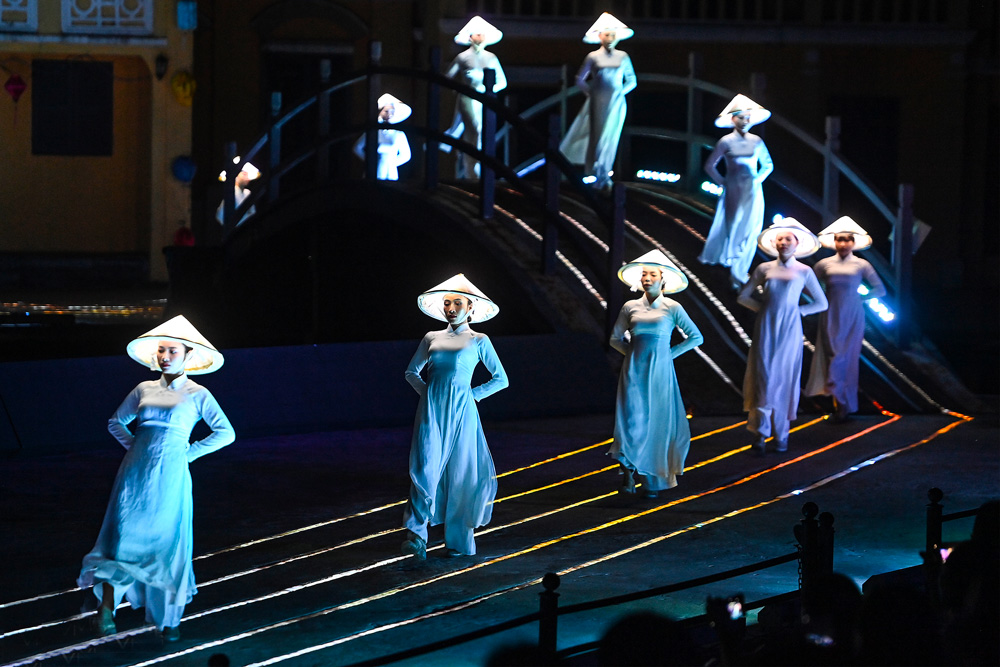
Just steps from the old town, Hoi An Memories is an impressive open-air performance featuring over 500 actors, a massive stage, and 400 years of Hoi An’s history told through sound, light, and movement.
No need to speak English, the visuals are powerful enough to understand everything. As for the theme park around the theater? Honestly, you can skip it. Just come for the show, that’s what really matters.
Make sure to book your tickets in advance to save time:
Buy your Hoi An Memories tickets on GetYourGuide
I’ve also written a full article about the Hoi An Memories show if you’d like to learn more.
Essential Information
- Entrance fee (show): 600,000 VND per adult
- Entrance fee for the park: 50,000 VND per adult
- Hoi An Memories showtime: 8 PM
- Park opening hours: from 4 PM
17. Lune Production Shows
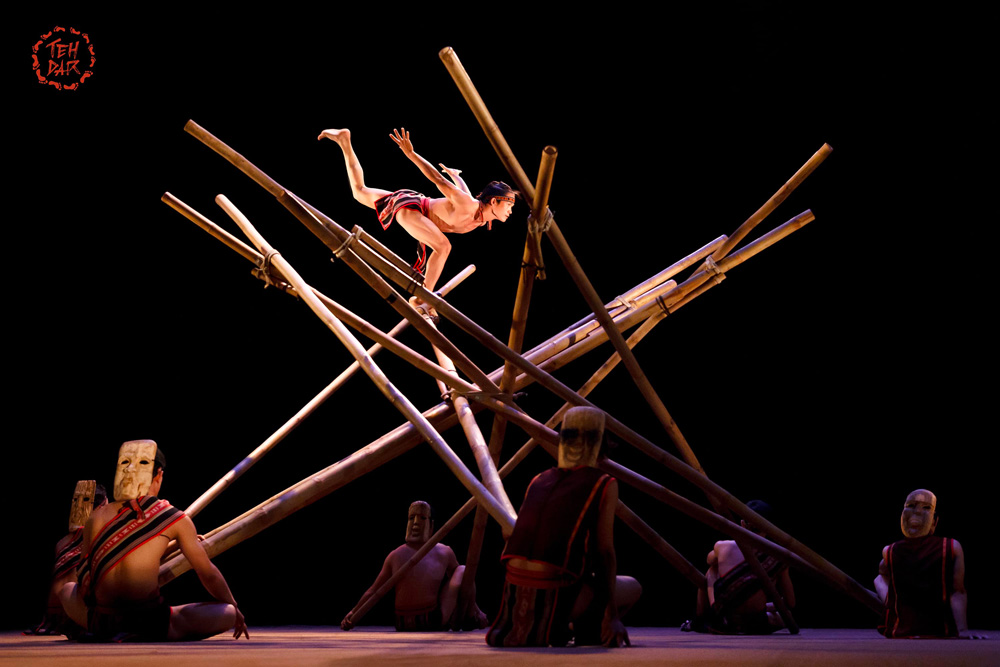
If You See Only One Show in Vietnam, Make It This One
Lune Production, well known in Hanoi and Saigon, also brings its shows to Hoi An at the Lune Performing Center, located just next to the old town.
Their style is often compared to a Vietnamese version of Cirque du Soleil, acrobatics, live music, poetic staging… My personal favorite is Teh Dar, which I’ve seen three times.
In Hoi An, they only perform the Teh Dar show.
The easiest way to book tickets is online through Klook:
Book your Teh Dar Show tickets in Hoi An here
Essential Information
- Address: 1A Nguyen Phuc Chu, Hoi An
- Price: from 700,000 VND to 1,600,000 VND depending on the chosen seat
- Showtime: 6 PM
18. Lantern Festival

Also called the Full Moon Festival, this is one of the most famous events in Vietnam.
It takes place on the 14th day of each lunar month, so once a month. On that night, the lights in the old town are turned off, making way for floating and hanging lanterns that create a magical atmosphere.
You’ll also see traditional performances, like chess games played in the streets. It’s not just a visual celebration, it’s also a spiritually important day for Vietnamese people. Many burn joss paper offerings in front of their homes to honor their ancestors.
On this occasion, entry to pagodas and assembly halls is free.
Here are the Lantern Festival dates in Hoi An for 2025.
19. Getting Tailor-Made Clothes

Hoi An is the go-to place in Vietnam for custom-made clothing.
Whether you’re after clothes, bags, or shoes, you’ll find a tailor on almost every corner in the old town. Prices are much lower than in Europe, as long as you choose a good workshop.
Avoid the market stalls or overly cheap options, quality comes at a price. Some reliable names include Mr Xe, Be Be Tailors, and A Dong Silk.
For custom-made shoes, the top pick is Friendly Shoe Shop (15B Hoang Dieu). Their motto is: No Like = No Pay – if you don’t like it, you don’t pay.
I’ve written a full article about the best tailors in Hoi An if you want to learn more.
20. Cooking Classes

Hoi An has a strong culinary reputation, so why not learn how to cook like a local?
Many restaurants offer cooking classes, often including a guided visit to the central market. You’ll learn how to prepare Hoi An classics like Cao Lau, Mi Quang, and Banh Xeo.
Here are some of the best options:
Mai Home : A truly immersive experience, with a market tour and hands-on cooking in a friendly setting overlooking local vegetable gardens. A great surprise I had recently.
Book the Mai Home cooking class with GetYourGuide
Baby Mustard : A peaceful class in the heart of the Tra Que vegetable gardens. Even if you don’t join the class, the restaurant is worth a visit for its flavorful food, peaceful setting, and attentive service.
Tra Que Water Wheel : One of the most popular cooking classes in the village of Tra Que, along with Baby Mustard.
Book this cooking class with Viator
21. Join a Traditional Craft Workshop in Hoi An
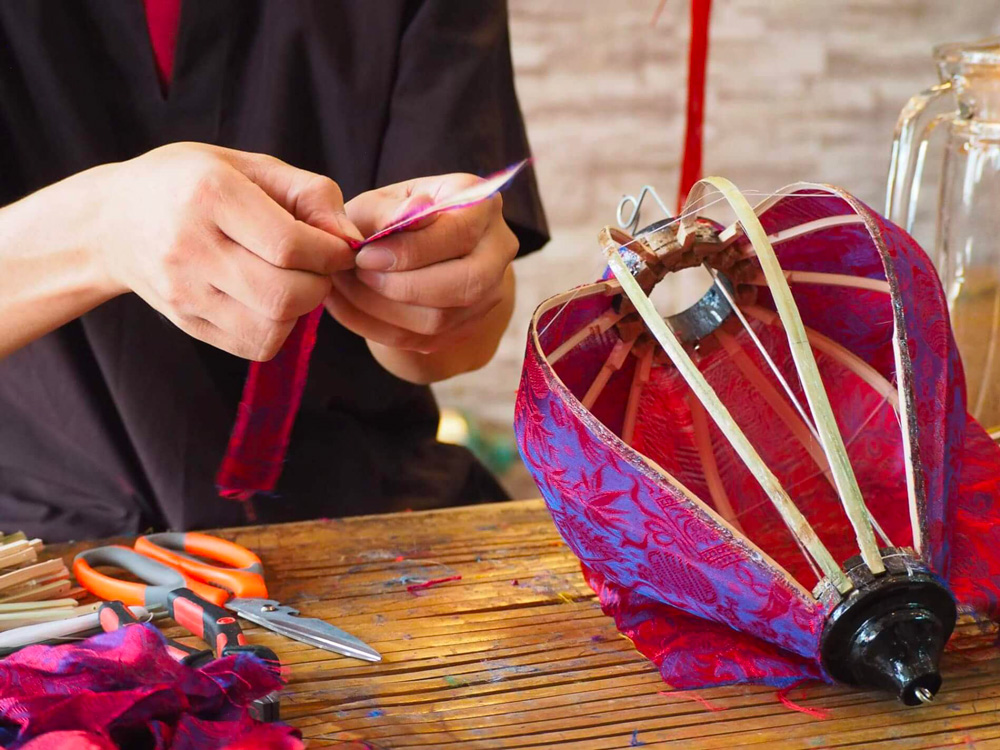
Hoi An is also a city of artisans, where traditional skills are still very much alive.
For a more local and hands-on experience, several workshops allow you to create your own souvenir with the help of a passionate craftsperson.
Lanterns, pottery, chocolate, bamboo carving – there’s something for everyone, of all ages. You’ll not only learn something new, but leave with a unique handmade item and a meaningful local experience.
Some of the most popular options:
1. Make your own pottery in Thanh Ha : Create your own piece in this pottery village, just a few minutes from downtown Hoi An. A simple yet authentic local activity, especially popular with families.
Book your workshop here
2. Vietnamese lantern workshop : Make your own bamboo and silk lantern, guided by a local artisan. Book with Hoi An Découverte
3. Chocolate at Alluvia : Alluvia is a well-known family business from the Mekong Delta, and a pioneer in Vietnamese artisan chocolate. They offer a workshop in Hoi An where you can make your own chocolate bar and truffles, with a drink or ice cream included. Book the Alluvia workshop on Viator
4. Bamboo carving with Phuong Do – Learn the traditional craft of bamboo carving with Phuong Do. Taboo Bamboo is the go-to workshop in Hoi An, with 359 positive reviews on Google Maps. (It’s also the only 100% bamboo-focused workshop, and it’s definitely worth it.). Book your Taboo Bamboo workshop
22. Take a wood carving workshop

If you’re looking for a creative activity in Hoi An, the WoodArt carving workshop is one of the best options around.
Duy, the founder (and YouTuber with over a million subscribers), designed a 3-hour workshop specifically for travelers. What makes this workshop unique is how it blends traditional Vietnamese carving with pop culture.
You’ll see sculptures of Dragon Ball Z, One Piece, and even Kratos from God of War. The level of detail is impressive, this is top-tier craftsmanship.
- Price: 500,000 VND
- Schedule: 8 AM and 2 PM (reservation required)
You’re free to carve whatever you like.


The workshop is held in English and is located a bit outside town, on the road to My Son.
Heads up: the entrance is easy to miss. Look for the sign that says “Au Lac”, not WoodArt.
Using Google Maps is the best way to find it. This is a fantastic activity, especially if you’re traveling with kids.
Essential Information
- Address: 389 610b, Cam Phu 2, Dien Phong, Dien Ban.
– 15 km from Hoi An town - Price: 500,000 VND
- Email: artist@woodartvietnam.com
- Website: https://woodartvietnam.com/
- Workshop hours: 8 AM and 2 PM
23. Distillerie d’Indochine

Located just a few kilometers from the city center, this visit lasts about 1 hour and 15 to 30 minutes and is guided by Antoine, one of the founders.
It ends with a tasting session. Booking in advance is recommended, though walk-ins are also welcome.
Several options are available:
- Tour without alcohol: 200,000 VND
- Tour + tasting of 3 white rums: 300,000 VND
- Full tour (4 white rums + 1 aged rum): 500,000 VND
- Tasting only: 250,000 VND
Recently, the distillery started producing English-style molasses rum, allowing production year-round, a great opportunity to compare French and English rum styles. Book your visit to the Indochine Distillery on Viator
Essential Information
- Address: Binh Duong, Thang Bình – Quang Nam
- Opening hours: 9 AM to 5 PM
- Price: from 200.000 VND to 550.000 VND
24. Take a Boat Ride on the Thu Bon River
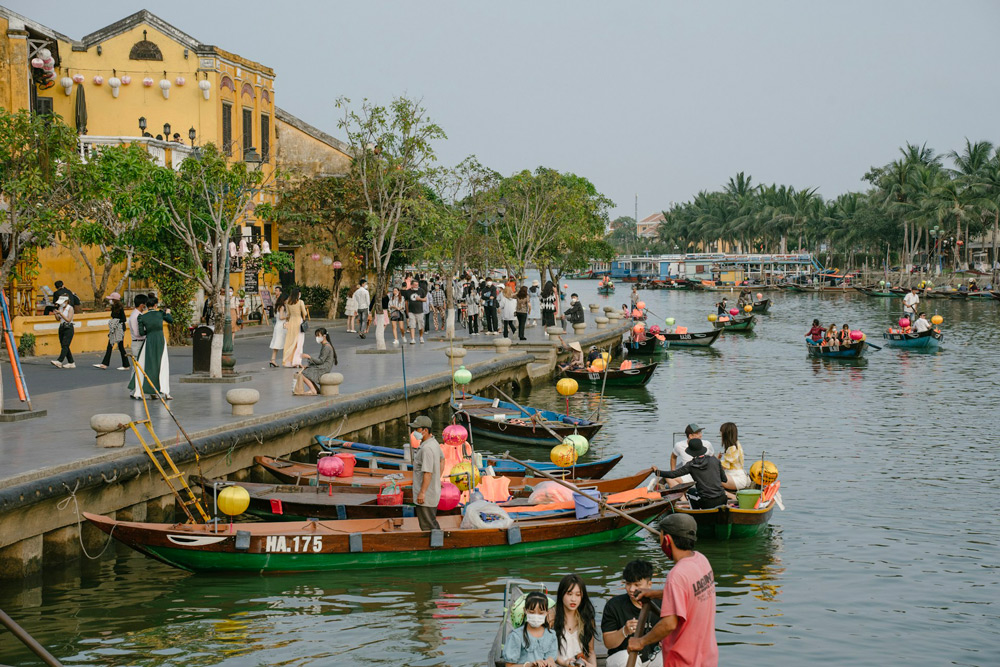
It’s a classic but it never gets old.
Whether you go during the day for a peaceful cruise or at night with floating lanterns, a boat ride on the Thu Bon River lets you see Hoi An from a different perspective.
You can board directly from the old town’s riverside (on the An Hoi side), with or without a reservation.
It’s a simple, relaxing activity, perfect for couples, families, or anyone who loves great photo opportunities.
25. The Cam Dong Bamboo Bridge

Among the more unusual sights around Hoi An, visiting one of the last remaining bamboo bridges in the region is truly worth it, especially if you’re into photography.
This 120-meter-long bridge, made entirely of bamboo, is an experience in itself to walk across. It’s highly photogenic, especially during the golden hours: early morning or between 4 and 5 PM.
What I love is that it’s not a tourist attraction. It’s still used by local farmers to reach their fields. If you go, a quick tip: be discreet, don’t block the path, and respect the place.
You’re stepping into real daily life in rural Vietnam.
Bonus: Around Hoi An

Da Nang
Located just 30 minutes from Hoi An, Da Nang is often associated with its neighbor, and for good reason, the two cities complement each other perfectly.
As the third largest city in Vietnam after Hanoi and Ho Chi Minh City, Da Nang is definitely worth exploring.
Here, you’ll find some of the country’s most iconic sites, including:
- the Marble Mountains
- the towering Lady Buddha
- the Cham Museum
- the Ba Na Hills amusement park
- and beautiful beaches perfect for relaxing
It’s also a great starting point for some spectacular road trips, like the Hai Van Pass or the Son Tra Peninsula (also known as Monkey Mountain).
For more details, feel free to check out my full guide to Da Nang.
My Opinion
I meet many tourists who only visit the Japanese Bridge and the old town. Most travel agencies only focus on these two spots, while Hoi An has so much more to offer in terms of sights and activities.
Whether it’s the surrounding villages like Tra Que, Cam Thanh, or the island of Cam Kim, the beaches like Cua Dai and An Bang, performances such as Hoi An Memories and Lune Production, cooking classes, or shopping-you can easily spend a week in Hoi An without getting bored.
Nearby, you also have the My Son sanctuary as well as Da Nang.

